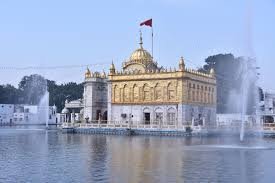Perched atop a hill in Srinagar, the Temple is one of the most significant religious sites in Jammu and Kashmir. Dedicated to Lord Shiva, the temple is not only an important pilgrimage destination but also a symbol of Kashmir’s spiritual and cultural heritage. Its rich history, breathtaking views, and spiritual ambiance make it a must-visit spot for anyone exploring the region. In this blog, we’ll take a closer look at the temple’s history, architecture, religious importance, and the experience of visiting this revered place. read more about Shankaracharya Temple Srinagar
A Glimpse into History
Shankaracharya Temple Srinagar, also known as Jyeshteshwar Temple, is believed to have been originally constructed by the ruler Sandiman around 200 BC. However, the temple gained its present form in the 9th century, thanks to the great philosopher and scholar, Adi Shankaracharya. His efforts in establishing the temple were part of his broader mission to spread the teachings of Advaita Vedanta and promote Hindu philosophy across India.
Architecture and Design
As you approach the temple, the first thing that stands out is the impressive structure, perched atop the Shankaracharya Hill. The temple itself is a blend of Kashmiri architectural styles and traditional Hindu temple designs.
The temple’s sanctum houses a statue of Lord Shiva, which is revered by devotees who visit the temple seeking blessings for strength, peace, and spiritual growth. The hilltop temple also offers an aura of peace and serenity that helps one reconnect with their spiritual self.
A Spiritual Journey to the Temple
The journey to the Shankaracharya Temple itself is an experience worth remembering. Located about 1,000 feet above Srinagar, the temple can be reached by a series of stone steps leading up the hill. Visitors must ascend approximately 243 steps to reach the temple, a task that, while physically demanding, is spiritually rewarding.
As you climb, the tranquil atmosphere becomes more evident with every step. The sound of nature, the fresh mountain air, and the peaceful environment combine to create an ideal setting for prayer and reflection. Devotees often carry offerings of flowers and incense to the temple, adding to the sense of devotion that fills the air.
Religious Significance
Shankaracharya Temple holds immense religious significance for Hindus. It is dedicated to Lord Shiva, who is revered as the supreme god of destruction and regeneration. For many devotees, the temple represents the embodiment of Lord Shiva’s divine power and is an essential part of their spiritual journey.
Every year, numerous pilgrims from across India visit the Shankaracharya Temple to offer their prayers and seek blessings. The temple is especially busy during Maha Shivaratri, a festival dedicated to Lord Shiva, when devotees come in large numbers to observe rituals and participate in prayer ceremonies. The temple’s spiritual significance, combined with its rich history, makes it an important site for those seeking inner peace and enlightenment.
The Serenity of the Surroundings
The Shankaracharya Temple’s location atop the hill adds to its serene atmosphere. The temple is surrounded by beautiful gardens, towering trees, and quiet paths that provide an ideal setting for reflection. The lush green landscape of Srinagar’s countryside enhances the peaceful vibe that the temple offers, making it a place for both worship and meditation.
Visitors to the temple can also enjoy the stunning views of Srinagar, with the shimmering Dal Lake visible below. The quietude of the surroundings, combined with the temple’s spiritual energy, creates a calming environment that allows one to connect with their inner self and experience a deep sense of peace.
The Mystique of the Temple
Over the years, the Shankaracharya Temple has gained a reputation for being a place of mystique. Many devotees believe that the temple has the power to provide answers to their prayers and offer solutions to life’s challenges. The temple’s peaceful environment, coupled with its sacred history, has made it a place where people seek spiritual solace and guidance.
Despite its historical and religious importance, the temple has remained somewhat quiet and hidden from the bustling crowds. Its secluded location adds to the temple’s charm, making it an ideal place for those seeking an escape from the hectic pace of modern life. The tranquil setting provides a chance to experience the profound peace that comes from connecting with the divine.
The Best Time to Visit
The best time to visit Shankaracharya Temple is during the summer months, between April and October. During this time, the weather is pleasant, and the views of Srinagar are particularly spectacular. Winter months can be harsh, with heavy snowfall making the climb difficult, but the temple still attracts a handful of dedicated devotees during these months.
It is also advisable to visit the temple early in the morning or later in the evening, as this will allow you to experience the temple in peace and avoid the crowds. The temple is open throughout the week, with regular prayer timings for visitors.
Conclusion
The Shankaracharya Temple in Srinagar stands as a beautiful amalgamation of history, spirituality, and natural beauty. Its tranquil setting, rich history, and religious significance make it a must-visit destination for anyone exploring Kashmir. Whether you’re on a pilgrimage or simply looking for a peaceful escape, the temple offers an opportunity to connect with the divine and experience the spiritual richness of the region.
Visiting the Shankaracharya Temple is not just about reaching the destination; it is about the journey itself. As you climb the hill and experience the breathtaking views, the journey becomes an integral part of the spiritual experience. The Shankaracharya Temple offers both a physical and spiritual ascent that leaves a lasting impact on all who visit.





